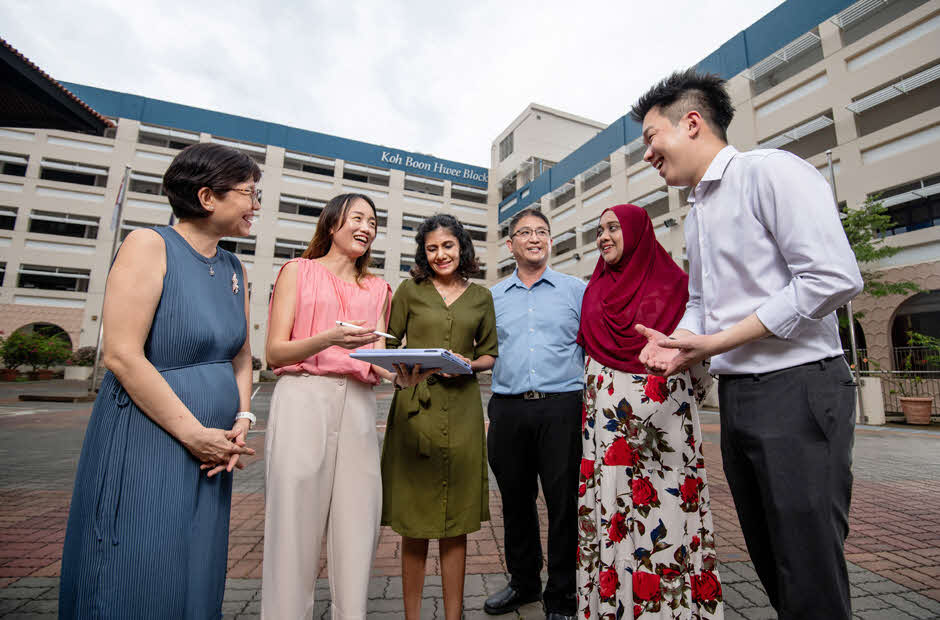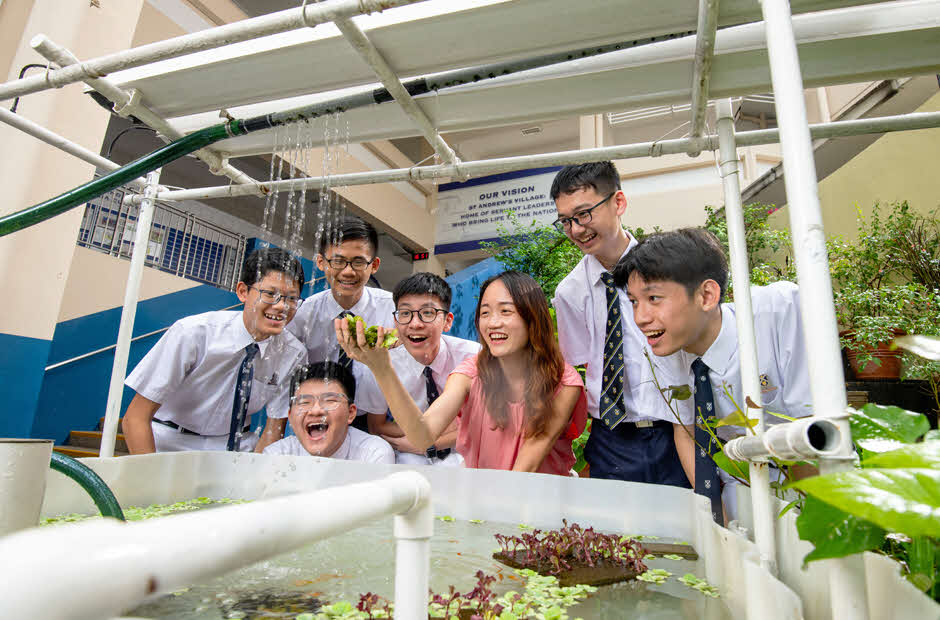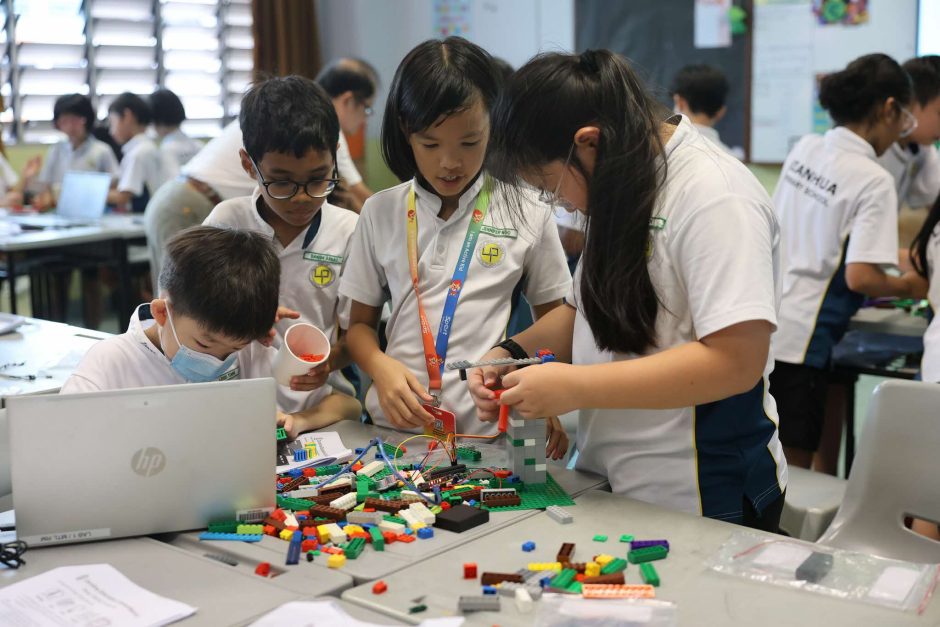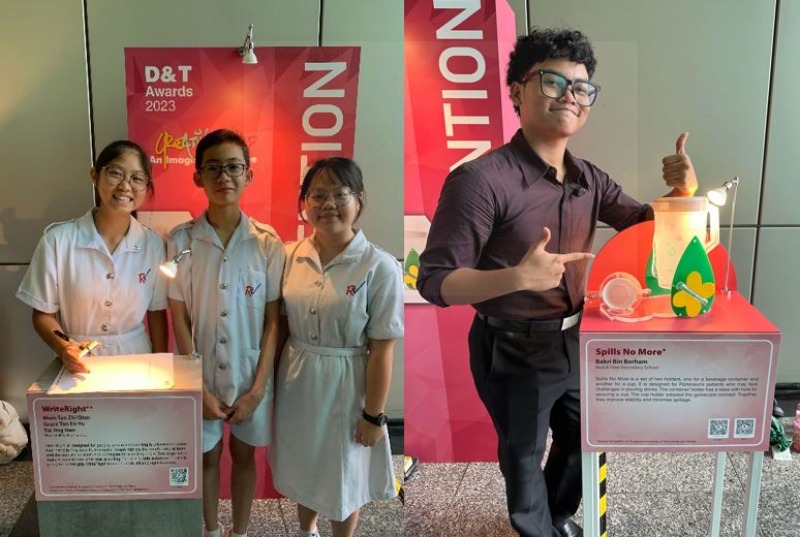A teaching win for me is… when students do not ask: “Will this be tested in the exam?”
Through the evolution of questions that students ask, I see that they care more about society than simply mugging for a test.
One of our school’s signature Science programmes is River Studies, where students learn about what it takes to keep the rivers in Singapore clean, which includes the various purification methods.
I brought our students to the Kallang River, which is a stone’s throw away from our school. Students first asked, “How can we measure how clean this water is?”
After several sessions of water collection and data logging with the Geography and PE departments, their question evolved to, “What can we do to improve the quality of the water?”
As we started brainstorming ideas, they later asked, “Who can we partner with to improve the river’s quality?”
To this end, we decided to involve the Potong Pasir community. We created posters to rally the residents to care for the river, to not feed the animals, and to appreciate the vast resources that go into keeping the river bodies clean.
Encouragingly, a student who is usually more reserved asked me when we could go out to collect river water again.
The questions that students ask reflect their thoughts. When learning about the world around us, my biggest triumph is when students ask how they can care for – and impact – society, instead of just learning for the sake of passing an exam.
An effective teaching approach for me is… to use technology as a second pair of ‘eyes’.
As part of the Secondary 2 Science curriculum, we learn how plants and insects are ‘equipped’ with different structures that allow them to survive. For example, some butterflies have wing patterns for camouflage.
My students, equipped with their own Personal Learning Devices, are asked to capture sightings of the various wildlife around the school. Upon taking a photo, they use an app called Google Lens to get a close-up and further information on the plant or insect, such as its scientific name. They have great fun zooming in to the different parts of a plant or insect, which they normally would not be able to examine.
Students upload these pictures onto a Padlet page, which also serves as a catalogue of the biodiversity found in the school. As they upload their images, they also include notes of their finds, which allows them to practise writing descriptions of these creatures.
All this has encouraged them to shoot even more photos. Now I see them using their free time to roam the school compound, ever-ready to capture a bird or a plant they might otherwise not have noticed. Some students whom I taught two to three years ago continue to upload onto the Padlet page, even when they do not have to. When I meet them along the corridor, they also remark, “Ma’am! Today I saw a Plain Tiger Butterfly!”. These forms of learning beyond the Science lesson are inspiring to me.
A project I find meaningful is… developing my school’s Green Envoys.
The Green Envoys are a group of students who champion environmental awareness in the school. I am proud of this project because while I’m in charge of it, I did not set it up.
This group was self-initiated – it started with six boys in Secondary 1. Other students got wind of this initiative and soon, 13 students from different classes and levels ‘found’ each other. All of them had a passion for the environment and the goal of doing more for the school.
The group has worked on projects such as e-waste recycling and growing edible plants. When they asked for permission for these activities, and to engage more teachers and students, I had replied, “Why not?”

This year, one of the Green Envoys stumbled upon an article about waste generated from red packets after Chinese New Year. They asked if they could rally the school population to donate and recycle their used red packets. “Why not?” I asked.
They sprang straight into action – from preparing the bins to designing it as an inter-level competition. The boys wrote an engagement script, and fearlessly addressed the entire school during one of the morning assemblies to rally for support.
Their passion was infectious, and we saw the entire school participate. Students even asked – and later, reminded – their Form Teachers to donate their red packets to add to the total weight collection!
This project means the most to me because I watched how a small group of students slowly but surely brought on board a whole school to be more excited about environmental-awareness initiatives. All this is done by encouraging them to think big, and simply asking ‘why not?’ when they come up with ideas.






